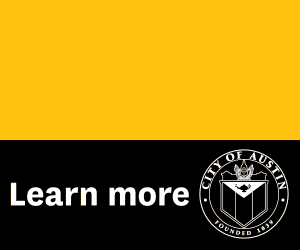Changes to the city’s Corridor Program raise ‘serious transparency concerns’ for transportation commissioners
Friday, May 10, 2024 by
Elizabeth Pagano A massive shortfall in the city’s Corridor Program has caused work to be paused or cut back in some areas of the city. At their most recent meeting, Urban Transportation commissioners questioned the lack of public engagement on the changes.
The current cost of all of the improvements envisioned in the program is about $1 billion, which is more than double the $482 million approved by voters through the 2016 mobility bond. The shortfall is expected to increase as inflation continues.
According to a presentation by Capital Delivery Services Deputy Director Eric Bailey, a number of projects along Airport Boulevard, Burnet Road, Lamar Boulevard, Slaughter Lane and William Cannon Drive have been put on hold or scaled back until funding is identified.
“About a year ago, as we were moving from the design phase into construction, is when it really hit home that we weren’t going to be having the funding available in the foreseeable future to actually take these projects through to construction,” Bailey said.
According to Bailey, decisions on what projects would be put on hold were made in cooperation with the department’s public outreach consultant, Rifeline, and the Transportation and Public Works Department. The projects were evaluated based on safety, equity and geography, he said.
Chair Susan Somers said that deferring improvements on North Lamar between Rundberg Lane and Braker Lane were especially concerning. She said she had toured the area with former Council Member Greg Casar, who pointed to it as an area in particular need of investment because of safety and equity concerns.
“That’s a pretty striking area to be eliminated,” Somers said. “It’s shocking and appalling that that is being deferred.
“I’m a big advocate for these bonds and funding, but when we promise communities something – communities that are struggling with traffic violence and inequitable infrastructure and then we remove them … and we find out in this setting, it’s very troubling,” she continued.
“It’s the most dangerous non-highway in all of Austin,” Commissioner Daniel Kavelman said.
Bailey said that the project was deferred because of its cost, not how needed it is. He explained that city code will mandate reconstruction of the drainage in the area, which would be “a very large expense.” However, he said, the city would be closing some sidewalk gaps in the area.
“That project really is in need of a larger regional solution that ties together Cap Metro, (Texas Department of Transportation), city of Austin various departments … and many other groups,” he said. “That project needs a much larger design effort in order to move forward.”
Bailey said that the program was currently working on rolling out what the revised and rescoped plans will entail and getting that information out to the public.
Commissioner Spencer Schumacher questioned the lack of information on the changes to the project plans, which are not currently detailed on the city’s website, and why there was no public engagement on the rescoping and deferment of the projects.
“I don’t see why this isn’t happening with more public engagement. The same thing happened with (Austin Transit Partnership), and they had a robust public engagement,” he said. “I would love to give some input on what is actually going to be built right in front of where I live. So I guess I’m just confused why all these decisions were made unilaterally.”
Bailey said the decisions were based on public input given on the full scope of the project, reasoning that the reduction was temporary and projects were on hold only until more funding was found.
“We were relying on previous public engagement,” he said.
“There are some serious transparency concerns with these projects. … I think there’s a little bit of trust to be regained in the community with regards to the amount of information that we’re getting about any of these projects,” Kavelman said. “It has been an issue and there have been a lot of frustrations.”
The Austin Monitor’s work is made possible by donations from the community. Though our reporting covers donors from time to time, we are careful to keep business and editorial efforts separate while maintaining transparency. A complete list of donors is available here, and our code of ethics is explained here.
You're a community leader
And we’re honored you look to us for serious, in-depth news. You know a strong community needs local and dedicated watchdog reporting. We’re here for you and that won’t change. Now will you take the powerful next step and support our nonprofit news organization?










